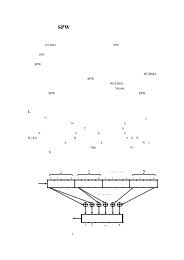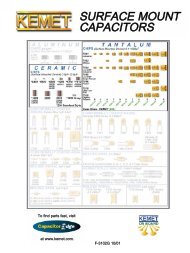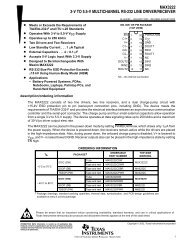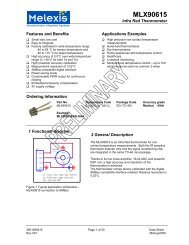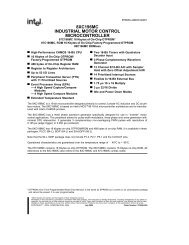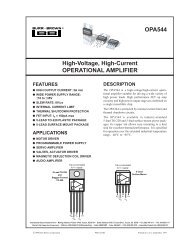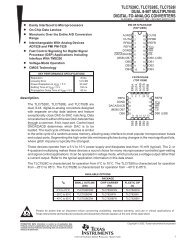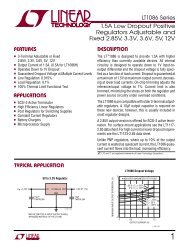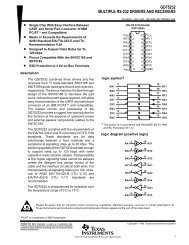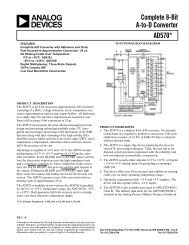TJA1053 Fault-tolerant CAN transceiver
TJA1053 Fault-tolerant CAN transceiver
TJA1053 Fault-tolerant CAN transceiver
Create successful ePaper yourself
Turn your PDF publications into a flip-book with our unique Google optimized e-Paper software.
Philips SemiconductorsProduct specification<strong>Fault</strong>-<strong>tolerant</strong> <strong>CAN</strong> <strong>transceiver</strong><strong>TJA1053</strong>Wake-up requests are recognized by the <strong>transceiver</strong> whena dominant signal is detected on either bus line or if theWAKE pin is connected to ground. On a wake-up requestthe <strong>transceiver</strong> will set the INH output which can be usedto activate the external V CC voltage regulator. If V CC isprovided the wake-up request can be read on the NERR orRXD outputs, on which the external microcontroller canwake up the <strong>transceiver</strong> (switch to normal operating mode)via STB and EN.To prevent false wake-up due to transients or RF fields,wake-up voltage threshold levels have to be maintainedfor a certain period of time. In the low power modes thefailure detection circuit remains partly active to preventincreased power consumption should errors 3, 4 and 7occur.Power onAfter power-on V BAT is switched on, the INH pin willbecome HIGH and an internal power-on flag will be set.This flag can be read via the NERR pin (STB = 1, EN = 0)and will be reset by entering the normal operation mode.The EN and STB pins will internally be set to LOW level, ifthe V CC voltage is below a certain threshold level, toprovide fail safe functionality.ProtectionsA current limiting circuit protects the transmitter outputstages against short-circuit to positive and negativebattery voltage.If the junction temperature exceeds a maximum value, thetransmitter output stages are disabled. Because thetransmitter is responsible for the major part of the powerdissipation, this will result in a reduced power dissipationand hence a lower chip temperature. All other parts of theIC will remain operating.The <strong>CAN</strong>H and <strong>CAN</strong>L inputs are protected againstelectrical transients which may occur in an automotiveenvironment.Table 1Truth table of <strong>CAN</strong> <strong>transceiver</strong>STB EN MODE INH NERR RXD RTL0 0 V BAT standby (1) HIGH active LOW wake-up interrupt signal if V CC is present switched to V BAT0 0 sleep (2) floating switched to V BAT0 1 go to sleep command floating switched to V BAT1 0 V CC standby (3) HIGH active LOW V BATpower-on flagactive LOW wake-upinterruptswitched to V CC1 1 normal operation mode HIGH active LOW error flag HIGH = receive;LOW = dominantreceived dataswitched to V CCNotes1. Wake-up interrupts are released when entering normal operating mode.2. If go to sleep command was used before (EN may turn LOW as V CC drops, without affecting internal functionsbecause of fail safe functionality).3. V BAT power-on flag will be reset when entering normal operation mode.2000 Dec 18 6



